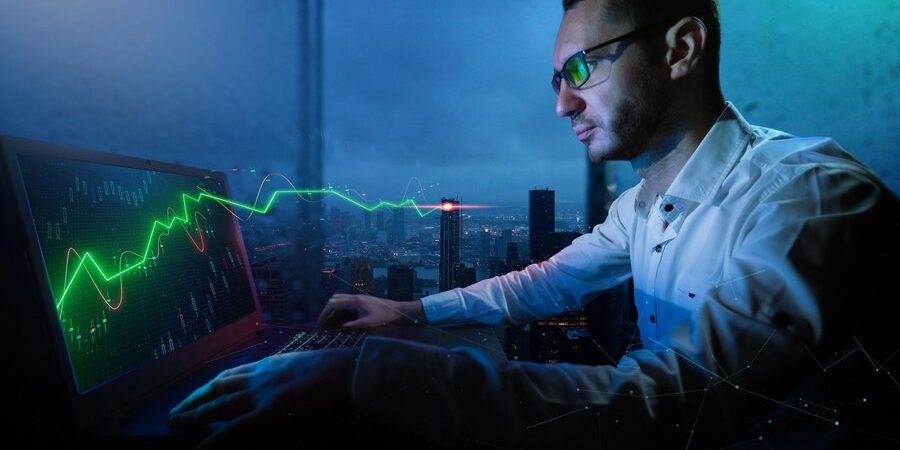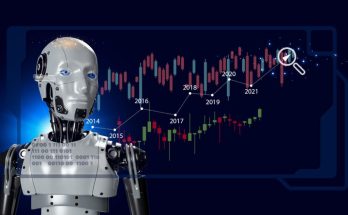The international forex market trades about $7.5 trillion on a daily basis. However, in spite of all the super-smart algorithm design and high-grade analytics, the biggest determinant of the success or failure of any trading process still happens to be human psychology. Imagine your brain being connected to technology to remove emotional mistakes of trading and optimize decision-making in real time.
This is no longer science fiction. Neurotrading as a combination of what can be considered one of the most modern sciences, the neuroscience and what can be discussed as the most important financial marketplace, the financial market, is evolving very quickly and soon we might see some practical, likely to be some game-changing avenues of approaches to the issue of forex trading.
What is Neurotrading and Why Does It Matter?
Neurotrading is a combination of brain-computer interfaces (BCIs) and trading systems that allow the analysis of neural data to make better financial decisions. These technologies have the ability to observe patterns in brain activity, detect the emotional state such as fear or greed, and give traders instant feedback.
The idea is more than a mere biofeedback. The current cognitive trading technology is artificial intelligence in the form of neurotrading that can make sense of complicated neural data and convert it to trading-focused output. BCIs may analyze the neural signals of a trader and accordingly detect patterns in decision-making and risk tolerance and adapt the trading strategies to them.
Most of the existing applications concern mental performance training and not brain control. Organizations such as ChartPros have developed patent-pending techniques that integrate the cutting edge of mental performance training (what they term elite-level mental performance training) with what they call precision-driven price action strategy. Such systems can aid in trying to close the gap between intellectual knowledge and action when under pressure that traders apply.
The Brain-Computer Trading Interface Science
Brain-computer interfaces are designed in such a way that the electrical signal of neurons is interpreted into a series of digital commands. Such systems are used in trading applications to scan particular areas in the brain that are linked to making decisions, controlling emotions, and analyzing risk.
Recent studies reveal that BCI is able to detect emotional conditions in real-time, which gives instant feedback to traders to make more educated choices and dampen the tendency to act impulsively. Through this capability, it answers one of the largest problems in forex trading, which is the psychological aspect that makes even experienced traders go out of their strategies.
The technology uses artificial intelligence to do the complex calculations of neurological data that can be produced by brain monitoring. Machine learning algorithms learn and refine their translation of neural signals and form truer and more responsive systems.
Existing Technological Limits
The neurotrading applications currently incorporate three major areas:
- Mental State Monitoring: These systems are able to pick up signs of stress, fatigue, overconfidence, and other conditions which can adversely affect the quality of trading performance. Once traders find themselves in compromising mentalities, the technology can be used to give out alerts or automatically reduce the position sizes.
- Enhanced Cognition: Other websites utilize neurofeedback training to advance attention, reaction time in decision-making skills, and emotional control. Traders receive frequent enhancement training that empowers neural networks linked to uncompromised performance.
- Behaviour Pattern Recognition: Complex systems assess past artificial neural data and trading history in order to detect individual behavior patterns. This develops individual trading profiles to maximize each trader’s psychological make-up.
Modern Forex Markets Practical Applications
The application of neurotrading concepts is already being applied in a number of companies in practical aspects. The NeuroTrading Method is one of the most advanced methods which integrates mental performance coaching and system trading approach.
The patented system resolves the usual issue of traders who know what to do, but are still not able to be persistent. It employs daily psychological conditioning exercises, preparedness testing, and post-trade evaluation to establish psychological discipline.
These technologies are becoming a major interest to professional trading firms as they propose to address the human aspect that algorithmic trading platforms cannot solve. Algorithms are not able to take into account the psychological reasons that lead human traders to countermand systems or act on emotion.
The integration opportunities also exist in regard to trading platforms. It may be possible to customize future applications to automatically adjust position sizes depending on the stress level detected, temporarily halt the traders during emotional volatile trading, or in real-time coach traders exhibiting revenge trading or FOMO (fear of missing out) behavior.
Possible BCIs Forex Trading Strategies Transformations
Brain-computer interfaces promise a number of desired benefits to forex traders:
- Improved Risk Management: Classical risk management is based on previous set rules and position sizing. Neurotrading systems might be able to dynamically alter risk parameters depending on the current state of mind of the trader. In case the system recognizes an excessively high level of stress or overconfidence, an autonomic shift in position sizes or a recommendation to take a break might occur.
- It removes Emotional Prejudices: The existence of cognitive biases such as losses aversion, confirmation bias, overconfidence, etc. always affect trading performance in a negative way. Through live identification of the biases, BCIs might offer corrective feedback in real-time or automatically modify the trading parameters to meet the difference.
- Blown Decision Timing: The technology would be able to identify when there was a suitable window in decision-making by looking at neural patterns. Other studies indicate that there are brain conditions that are more likely to support the analytical process and others that will encourage impulsive reaction. The neurotrading systems would suggest the most appropriate moments to make crucial trading decisions.
- Custom Strategy Formulation: BCIs may also be used to produce highly personalized trading strategies through correlating neural patterns and trading results. The system would adapt to know what market conditions and psychology would give the best returns to each individual trader.
The Neurotrading Technology and Its Challenges and Limitations
Neurotrading does have a lot of technical and practical challenges:
- Data Privacy and Security: Brain data is the closest to personal information. It poses a cybersecurity challenge that has never been experienced in protecting this data against hackers, governments, or corporations.
- Technological Limitations: Modern BCIs are limited by the expensive and, in some cases, invasive technologies associated with them. Extracranial (non-invasive) devices such as electroencephalography (EEG) have limited accuracy whereas implanted systems are considered high cost and potential risks of surgery.
- Regulatory Uncertainty: Brain-computer trading interfaces are not yet outlined by financial regulators. Lawsuits concerning liability, market manipulation, and fair access are still outstanding.
- Individual Variability: Brain patterns vary widely among individuals and may also change with time because of age, health (or other aspects). Systems have to change persistently in order to be effective.
The New Frontier of Neurotrading
According to industry planners, the brain-computer interface market will experience high growth within the next few years. We should see wider use in financial markets as the technology becomes widely available and the costs reduce.
They are also likely to jump forward as they integrate with artificial intelligence. Neural data can be processed more effectively than by human analysts with the assistance of AI systems and employing them to recognize minor patterns they could have missed in their observation. This union might bring trading systems that can grasp market ratio and psychology of man with an extent previously not available.
The technology can even be democratizing the availability of the trading psychology of elite traders. At the moment, high-level mental performance coaching is only accessible to institutional traders and the affluent. Neurotrading systems have the capability to bring these abilities to retail traders at considerably reduced prices.
Another possible frontier is Cross-chain and multi-platform integration. Firms such as Neuro are already coming up with high-speed trading platforms which possibly in the future will be integrated with a neural feedback system. Such environments are designed to deliver sub-second execution along with smart automation.
The Neurotrading Revolution Readiness
Any traders keen on this emerging trade should begin by appreciating the psychology of what they trade in until now. Several neurotrading concepts are extensions of the principles of trading psychology and mental performance.
Training programs and educational materials are getting more widespread. Some dwell on technological side, some on psychological grounds onto which neurotrading systems advance.
The trick is to realize that effective neurotrading will probably not assume a situation where technological amplification is substituted with absolute human judgment instead. The most promising systems are likely to supplement the human decision-making process instead of automating it.
Regulatory developments and industry standards should also be determined to select the best ones as this technology evolves. On one side, early adoption can bring competitive benefits; on the other side, it needs serious risk and limitation consideration.
The introduction of brain-computer interface has signaled a paradigm change in the way we conceive trading psychology and the market. Having said that, despite its obvious difficulties, neurotrading is both one of the most promising developments of contemporary finance because it offers the possibility to optimize a human in financial markets. The traders that are aware and able to get accustomed to these technologies can experience significant benefits in an even more competitive marketplace.



